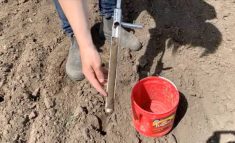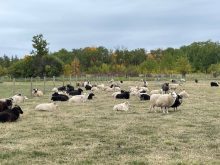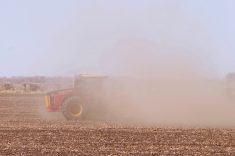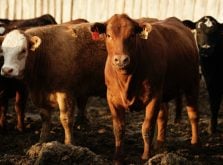I enjoy reading various agronomy- and soil-related extension information. Recently, I was reading an article from Alberta Grains’ newsletter The Growing Point on winter wheat production. At the end of the article was a link to a factsheet. That link took me to an Alberta Agriculture Agdex publication — which I wrote 16 years ago, in 2007.
The Agdex article summarized an agronomic and fertilizer study we had conducted in southern Alberta. It still contains good, solid information for southern Alberta winter wheat growers, but the section on slow-release fertilizers was dated. Sixteen years later, new work has been done with slow-release nitrogen fertilizers. Sadly, this newer information has never been written up in an extension publication or posted for easy access by farmers. This is a huge gap I often see between research and extension.
Read Also
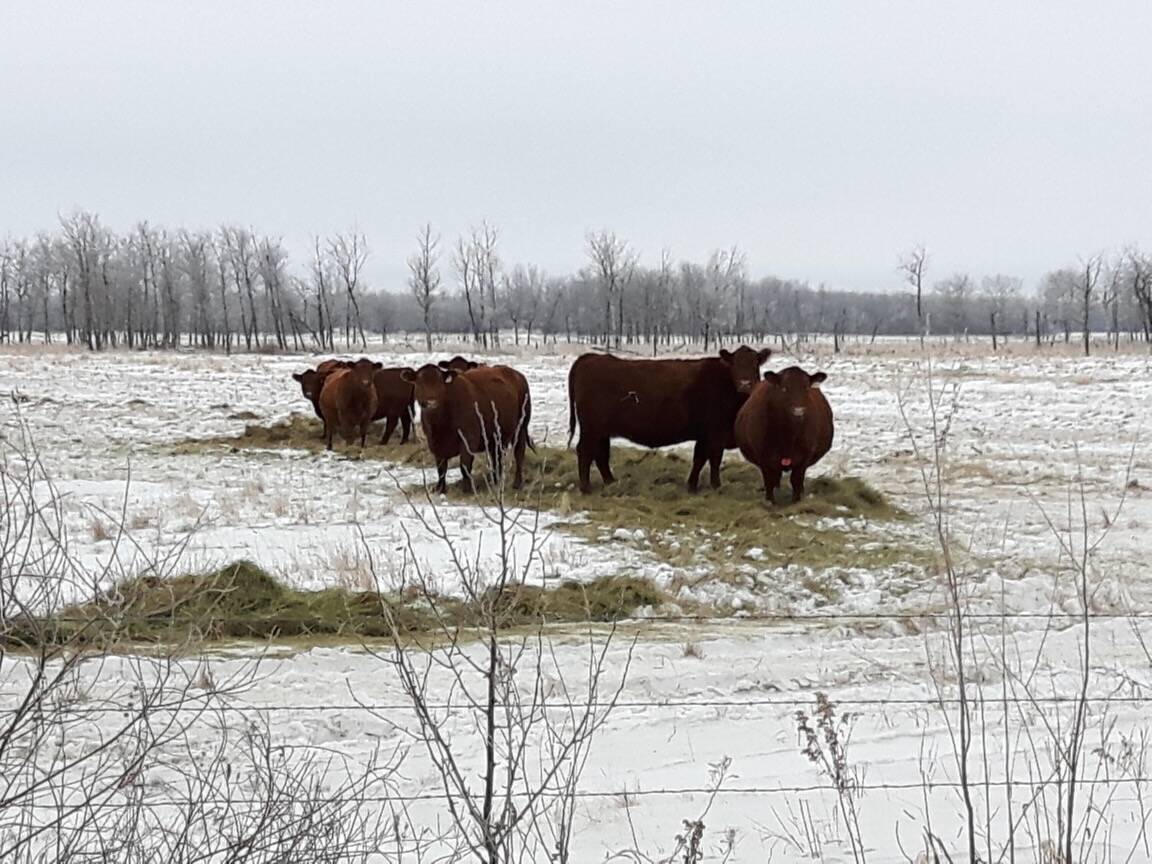
Prevent nitrate poisoning in overwintering beef cows
High-nitrate feeds can be deadly for overwintering beef cows. They can be used, but only if they’re processed and diluted in a lower nitrate ration.
Where do farmers and agronomists go now to access the most up-to-date research and agronomic information? Why was my older Agdex publication never updated by Alberta Agriculture, nor by researchers who had conducted more recent slow-release nitrogen research? Well, Alberta Agriculture terminated almost all its extension and research staff, so no one is employed there who could update Agdex publications on the Alberta Agriculture website. Its former good Information Age website, Ropin’ the Web, was terminated, replaced by a much more difficult site to navigate. And no one is left to update publications, which means the information is getting older and less useful as each year goes by.
The challenges to access up-to-date information go much further. When researchers complete their research projects, how are the results documented for easy access by farmers and agronomists? This is a huge missing link in Alberta. Most good researchers publish their results in peer-reviewed journals. But often researchers don’t take the time to write up their results in an easy-to-read extension publication or fact sheet that could and should be published and posted on a common website for easy access by farmers and agronomists.
The next question for researchers who want to make that extra effort to write an extension publication for each of their projects is, where to post their information?
In Alberta, we have no shortage of research groups involved with various agronomic studies:
- Universities: University of Alberta, University of Calgary, University of Lethbridge
- Colleges: Lethbridge College, Olds College, Lakeland College
- Applied research organizations: MacKenzie Applied Research Association (Fort Vermillion); North Peace Applied Research Association (Manning); Peace Country Beef and Forage Association (Fairview); Smoky Applied Research and Demonstration Association (Falher); Battle River Research Group (Forestburg); Lakeland Applied Research Association (Bonnyville); Gateway Research Organization (Westlock); Chinook Applied Research Association (Oyen); and Farming Smarter (Lethbridge).
In Alberta, there are at least 14 different research groups, each with its own website. The various crop commissions have good websites. The funding agency in Alberta, Results Driven Agriculture Research (RDAR), has its own website. That is a lot of websites to wade through to look for information. The problem is which websites to visit to access agronomic research results. Some applied research organizations will only permit their financial supporting members to access their websites to search for information and are not open to everyone, restricting access to information.
In Alberta, it’s my opinion we need one well-managed and -maintained website for all agronomic extension publications. As mentioned, Alberta Agriculture’s former Ropin’ the Web site had an editor and website manager who ensured a well-organized and -maintained website with well-written publications. Specialists co-ordinated the posting of up-to-date, current Agdex publications in all the various agronomic disciplines. Each Agdex publication was reviewed by the editor and specialists for readability and accuracy. The specialists would ensure all posted information was kept current and easy to find and access. A common website like this would go a long way to assist farmers and agronomists to access up-to-date information versus aging information. But researchers would have to take the time to write and post their results.
Another problem facing Alberta is having co-ordinated research across the province. As mentioned, there is no shortage of research groups. Until about 20 years ago most agronomic research in Alberta was done by Alberta Agriculture, Agriculture Canada, the University of Alberta and several private groups such as Westco. In those days, research resources were limited, and researchers made real efforts to work together to co-ordinate research. But in recent years, there seem to be barriers among research groups that prevent organized, co-ordinated, province wide efforts.
For example, there is a need for co-ordinated fertilizer research for all crops across all major soil zones in Alberta, to maintain up-to-date fertilizer recommendations. The database of information to make good 4R recommendations gets older every year. Co-ordinated, provincewide research work ended with the demise of Alberta Agriculture. The various research organizations in Alberta have not picked up the ball. The losers are Alberta farmers, soil testing labs, fertilizer dealers and agronomists who depend on reliable, current research to make 4R fertilizer recommendations.
RDAR was established by Alberta Agriculture in 2020; after three years of operation, we should be seeing improved co-ordination of research across the province. But so far, there doesn’t seem to be much co-ordinated research among research groups. On the RDAR website, no annual research reports are posted. So, where do Alberta farmers and agronomists go to see the benefit of how $90 million has been spent by this group over the past three years? New research information should be easy to access but isn’t.
Prior to RDAR, Alberta Agriculture provided research funding to the Alberta Crop Industry Development Fund (ACIDF) for 17 years. After the Alberta government terminated funding to ACIDF, the board voted to close its doors. If you go to the ACIDF website now to view former research projects and final reports, you will find there isn’t one. There is no way to view final research reports. This is no way to access information on funded research. Many millions of public dollars were used to fund this research agency and the Alberta government has nothing to show for it. It is a perfect example of why researchers such be required to publish their research results in extension publications and final reports on a public, permanently maintained website for access by farmers and agronomists.
Back to the title of this article: it is up to researchers and research organizations, funding agencies, producer commissions, industry and Alberta Agriculture to work collectively to do a much better job of co-ordinating provincewide research in Alberta and to ensure up-to-date information is written up in extension publications that can be easily accessed by farmers and agronomists.
In my next article, I will focus on the lack of fertilizer research, soil testing research and a huge need for improvement.




